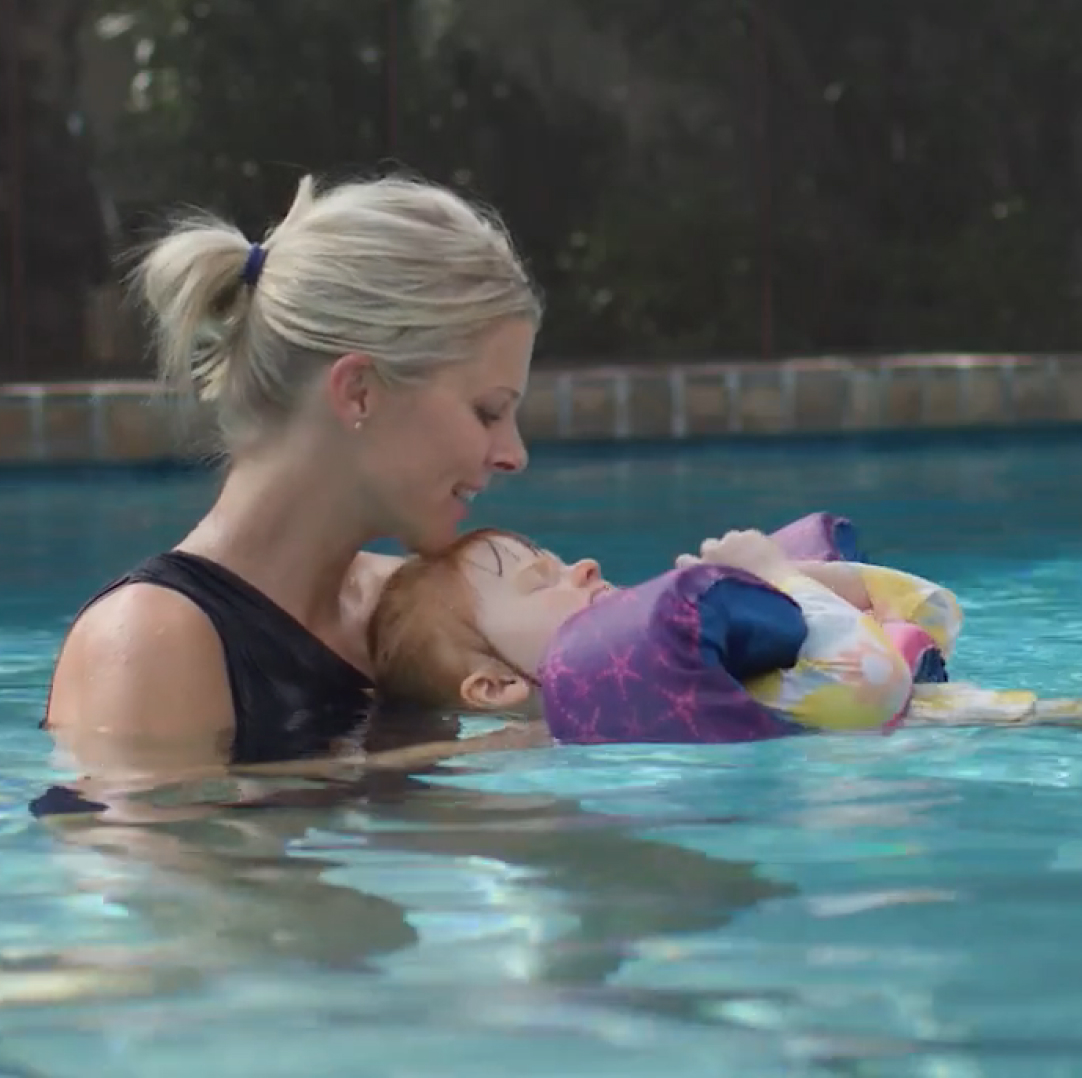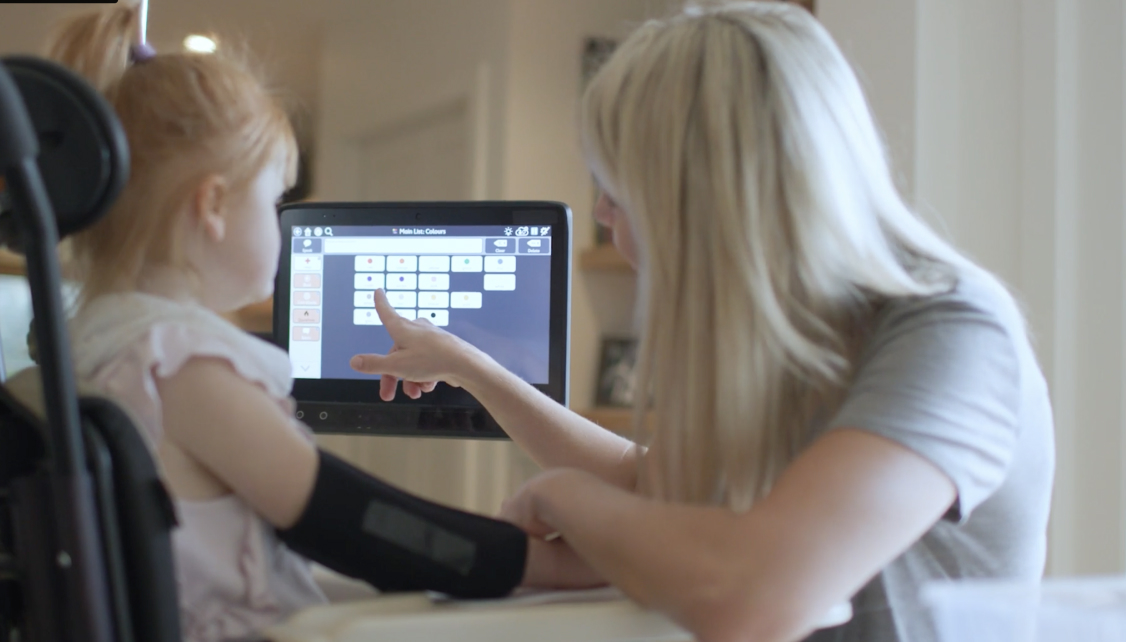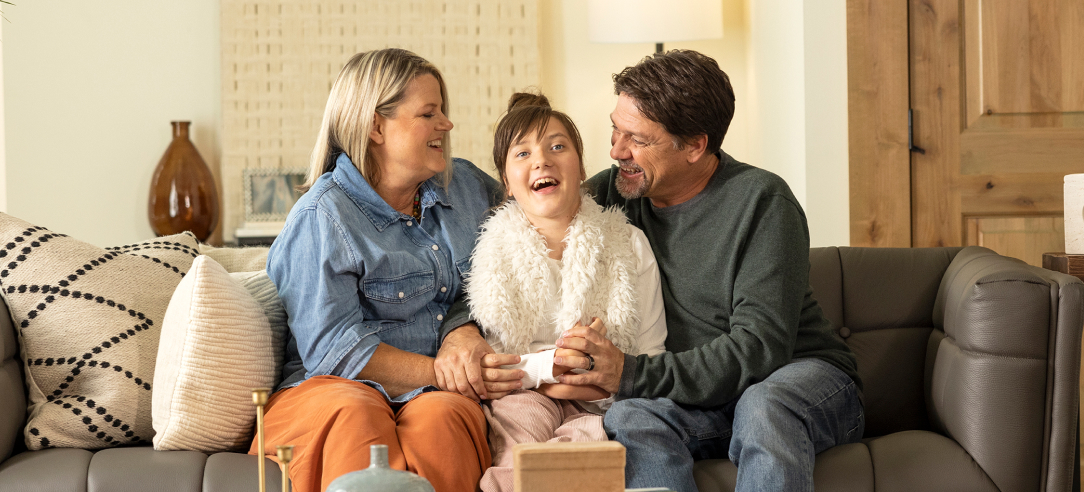Rett Care Plan
Reveal more about your
child with a
comprehensive care plan
child with a
comprehensive care plan
Rett syndrome affects multiple body systems and functions, which means caring for a child with Rett will involve doctors and other care providers who are experts in different fields.
Managing Rett is all about teamwork.You, your doctor, and
will be working together to develop a comprehensive care plan for your child based on their symptoms and needs.Don’t forget that while doctors may be the clinical experts, you are the expert on your child. Your role is vitally important not only to your child’s well-being, but it’s what’s going to help them live their best life. Multidisciplinary care over time can help manage their signs and symptoms, even into adulthood.

Caroline holding Minna during hydrotherapy
Minna Revealed: Minna’s Story
Learn more about Minna, a 4-year-old living with Rett syndrome.
Life with Minna, who has Rett syndrome, requires patience. Caring for her can be challenging, but it's also an amazing experience.
Each day is different. Some days she just doesn’t want to work on walking, and other days, she has no issue with it. It’s more about motivation with Minna.
Caroline, Minna’s Mom
Unique Rett symptoms = unique Rett care plan
Each family’s experience with Rett syndrome is different, so there is no one-size-fits-all approach to a care plan. Needs will change as your child gets older.
A care team’s goal is to manage symptoms and provide developmental support for your child throughout their lifetime, which could help with their movement, ability to communicate, and engagement in social activities.
Here are some therapeutic approaches other Rett families use:

Physical therapy
Physical therapy (PT) can enhance your child’s physical fitness and function and help reduce the dangers of becoming unable to move (immobility).
Music therapy
Music therapy (MT) can improve functional hand use, develop the possibilities for making choices, enhance nonverbal communication, attention, and eye contact, relax and sooth, and help express emotions and feelings.
Speech-language therapy
Speech-language therapy (ST) can increase the ability for your child to use Assistive Augmentative Communication (AAC) devices, address difficulty with movements (apraxia), and help with basic motor challenges involved with eating.
Occupational therapy
Occupational therapy (OT) provides ways to help your child increase the use of their hands and body by adapting the child’s environment, improving their ability to control their own world.
Hydrotherapy
Hydrotherapy (HT) presents the pleasant surroundings of warm water while reducing muscle tightness (from prolonged muscle contractions, called spasticity) and softening rigid tissues.

Special education
Students with Rett syndrome should have access to an education that will enable them to develop the knowledge and skills they need to participate in society to their fullest ability.
Medications
Medications may be useful for managing symptoms that interfere or cause trouble in your child’s daily life (like constipation, seizures, and osteoporosis).
Adapting and sticking to a comprehensive care plan is not an easy task and can be exhausting. Know that changes may come slowly.
Small improvements in Rett symptoms through different therapies over time could lead to an overall, healthier physical and emotional well-being for both you and your child.
Communication with Rett
The abilities of children with Rett syndrome are often underestimated because many of them can’t communicate through spoken words or hand movements.
Adaptive tools and devices have given them new ways to reveal what they have to say and make choices.
Different therapeutic approaches, like music therapy, hippotherapy (where a therapist uses a horse as a "live" treatment tool), and adaptive activities, can help your child living with Rett develop new ways to express themself and build new skills.

Minna uses her eye gaze communication device
Minna loves to communicate with us. One day, my husband walked in, and Minna said through her talking device, ‘Hi, how are you today?’ He said hello to her, and then she asked him how his day was. We were stunned.
Caroline, Minna’s Mom
Teens and adults with Rett
The need for therapy and support doesn't end as your child gets older. And children with Rett syndrome can (and do) live well into adulthood. You may have a lot of questions of what life will look like as they enter puberty and eventually transition to family-centered adult medical care.
The International Rett Syndrome Foundation (IRSF) empowers families with information, knowledge, and connectivity.
Visit IRSF’s Living With Rett page for resources designed to help caregivers navigate through the varied needs of an aging loved one with Rett.
Who's who: your Rett care team
Choose a care team member to learn more about their role.

